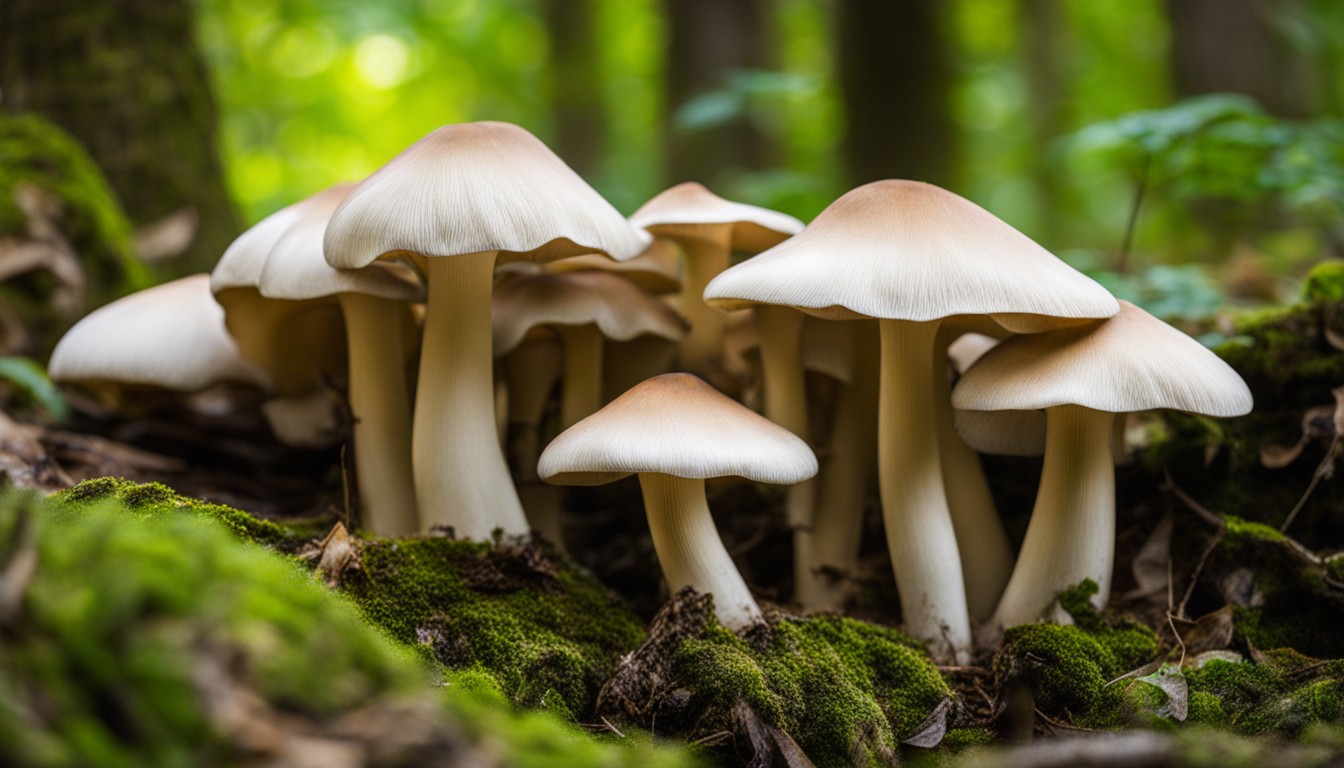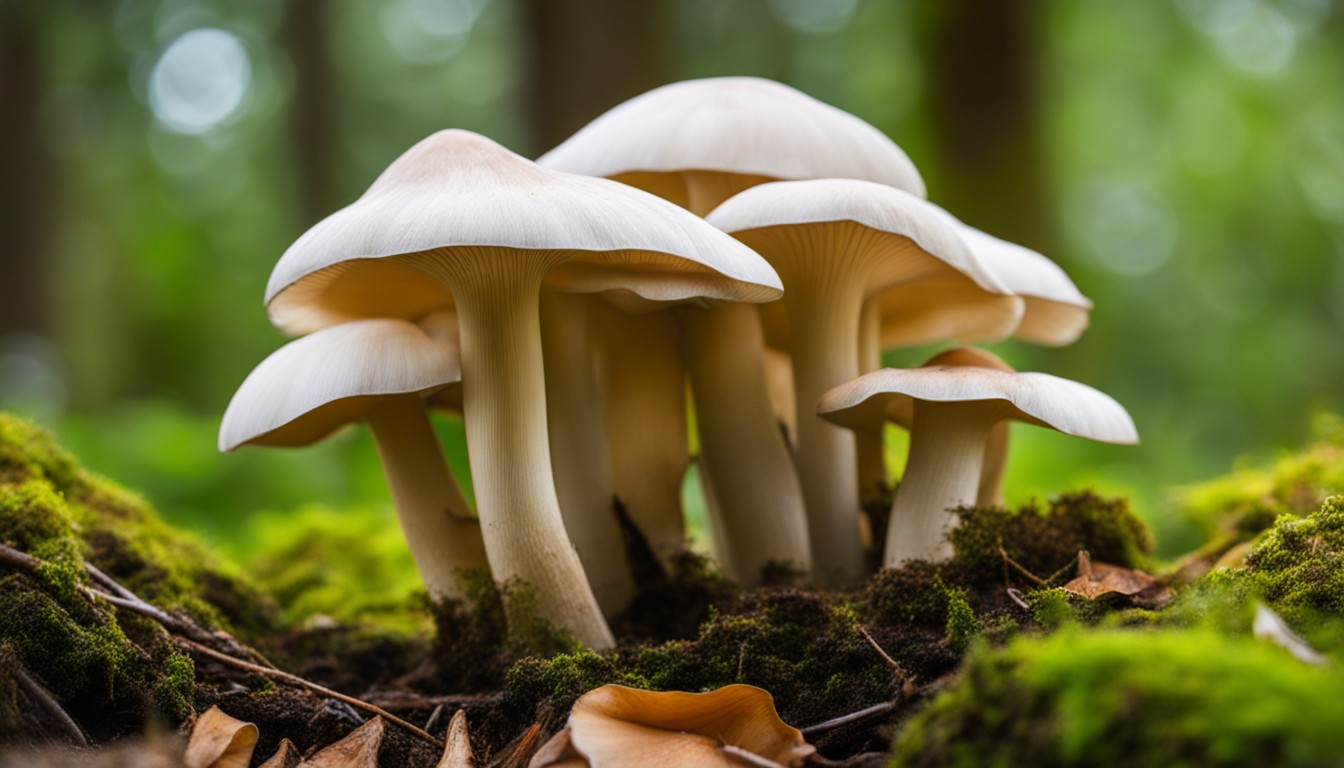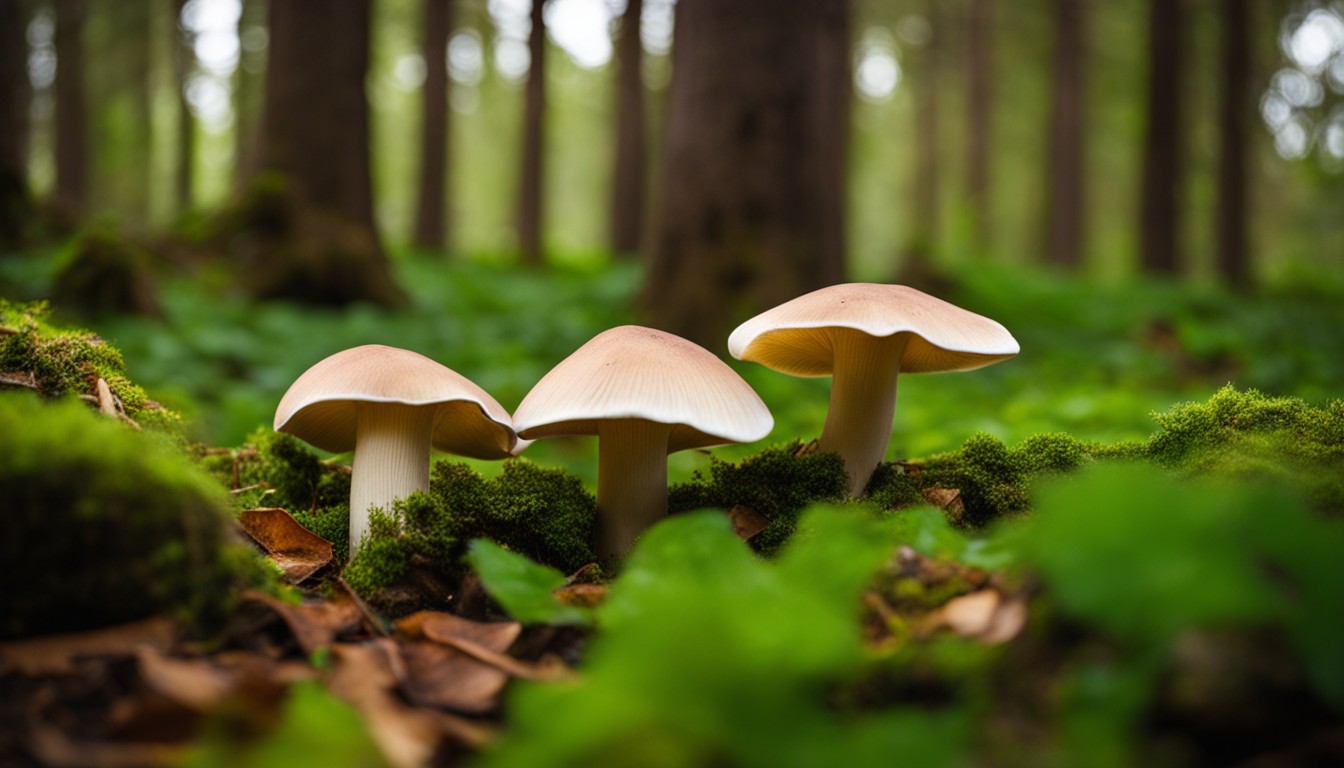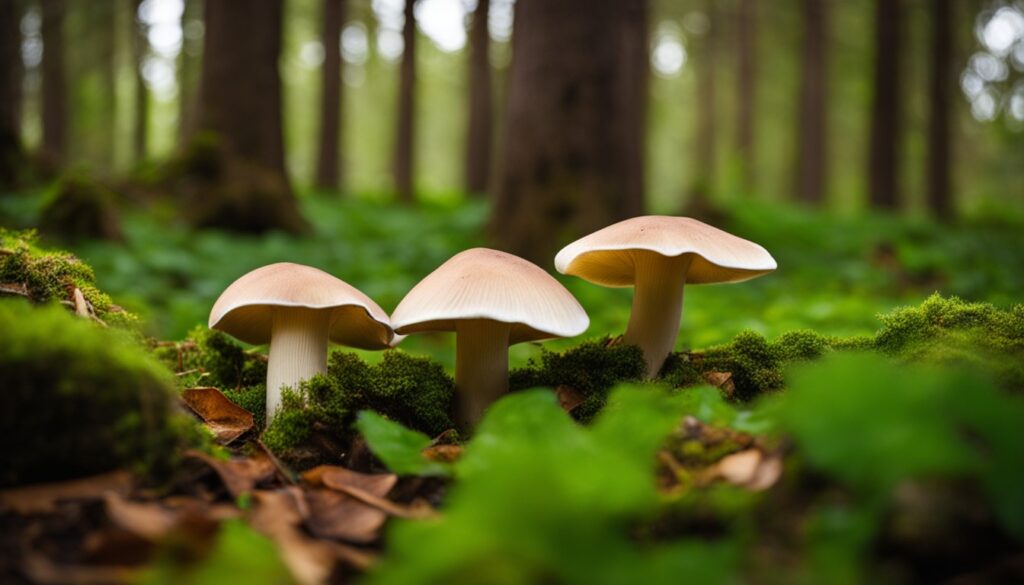Mushrooms of the Southeast: A Comprehensive Guide is a meticulously curated resource that delves into the diverse world of fungi native to the southeastern region of the United States. From identification tips and habitat descriptions to culinary uses and potential health benefits, this comprehensive guide offers invaluable insights for both novice nature enthusiasts and seasoned mycologists. Explore the fascinating array of mushroom species found in the Southeast and deepen your understanding of their ecological significance in this extended and informative blog post.
Identifying Mushrooms in the Southeast
Meticulous observation is key when identifying mushrooms; noting details such as the cap shape, gill attachment, color, size, and spore print will enhance your skill of accurate classification.
Field guides, tailored specifically for the Southeast, are invaluable tools during mushroom identification. These detailed aids frequently offer in-depth descriptions, vivid images, and key characteristics of local fungi species.
Mushroom Identification Basics
Recognizing the distinctions between cap, stem, and gill forms is essential in mushroom identification. Theses are key physical features, with each uniquely varying across different species, influencing mushroom classification and recognition.
Through analyzing color and pattern of spore prints, mushroom species can be classified more precisely, enhancing our understanding of these distinct fungi.
Spore print, a feature that goes unnoticed, plays a significant role in identifying mushroom species. It’s a method of observing the color and pattern of spores, providing a more detailed insight into the nature and species of different mushrooms.
Common Edible Mushrooms in the Southeast
The Southeast, with its moist forests and mature ecosystems, offers a variety of edible mushrooms to foragers, each with its distinct flavor and culinary uses.
- Morels: Prized for their honeycomb-like structure and meaty texture, morels are usually found in early spring near decaying trees.
- Chanterelles: Recognized by their bright yellow or orange color, these mushrooms have a fruity aroma and are usually found under hardwook trees in mid to late summer.
- Shiitakes: Cultivated year-round on hardwood logs, these mushrooms boast a rich, smoky flavor that serves as a good dietary source of iron.
Toxic Mushrooms to Avoid
In the rich forests of the Southeast, it’s crucial to avoid confusing edible mushrooms with their toxic look-alikes. Safety lies in understanding the characteristics of key poisonous species prevalent in this region.
- Death Cap (Amanita phalloides): Known for its deadly toxins, confusing it with the Paddy Straw mushroom can have fatal consequences.
- Destroying Angels (Amanita virosa, Amanita bisporigera, Amanita ocreata): The all-white mushrooms are dangerously toxic, often mistaken for the edible Button mushroom.
- Deadly Galerina (Galerina marginata): A small brown mushroom that resembles the edible Honey fungus, harboring lethal toxins.
- Autumn Skullcap (Galerina marginata): Frequently mistaken for Psilocybin Mushrooms, consumption can lead to severe liver damage or death.
- False Morel (Gyromitra esculenta): Resembling the edible Morel, this mushroom contains a toxin that can cause nausea, dizziness, and in severe cases, death.
Mushroom Hunting Tips

If your goal is successful mushroom foraging in the Southeast, respect the prime rule: never consume a mushroom unless you’re 100% sure of its identification. Always consult with a local expert or regional field guide.
The right gear can optimize your mushroom hunting effort. Equip yourself with a sturdy basket or mesh bag for collection, a small knife for clean harvesting, comfortable footwear for rough terrains, and a hand lens for close-up examination.
Best Times and Places to Find Mushrooms
In the Southeast, mushroom hunting flourishes in certain seasons and locations, with some forest trails proving to be particularly abundant.
- The wet, humid periods of late spring and early fall often create the most conducive conditions for mushroom growth in the Southeast.
- Forest trails such as Congaree National Park in South Carolina, Great Smoky Mountains National Park in Tennessee and North Carolina, and Ocala National Forest in Florida are renowned for their rich mushroom diversity.
Tools and Equipment for Mushroom Foraging
In the Southeast’s diverse forests, at least four key tools will elevate your mushroom foraging experience. Beyond making identification and collection more effective, incorporating modern technology can enrich your outing.
- A reliable field guide or a mobile application with an extensive mushroom database.
- Basket or mesh bag for collection, allowing sporulation as you travel.
- A small, sharp knife to cleanly cut mushrooms and cause minimal damage to the mycelium.
- A GPS or mobile device with mapping capabilities, not just for navigation but also for marking successful foraging spots.
Safety Precautions During Mushroom Hunting
Navigating forests in the Southeast calls for cautious steps. Always look out for dangerous wildlife and poisonous plants, not just harmful mushrooms. Wear protective clothing and sturdy boots, and always carry a first-aid kit in case of emergencies.
In the pursuit of mushroom foraging, understanding potential allergies and reactions is paramount. Some mushrooms can cause irritating skin reactions upon contact, or induce severe digestive upset if mistakenly consumed.
Even harmless mushrooms can trigger allergic reactions in some individuals. Be aware of symptoms like rashes, difficulty breathing, and dizziness. If such reactions occur, immediately withdraw from the foraging area and seek medical help.
Lastly, even experienced foragers should never consume a mushroom they cannot positively identify. Mistakenly eating look-alike toxic mushrooms can lead to serious health complications, or in extreme cases, death. Reinforce your identification skills before venturing out.
Cooking and Preserving Mushrooms

Highly prized for their rich flavors and health benefits, Southeastern mushrooms deserve to be enjoyed year-round. Through proper drying, pickling, or freezing techniques, one can successfully preserve the region’s bountiful fungi.
When it comes to Southeastern mushrooms, skillful culinary techniques can enhance their inherent flavors. Whether it’s sautéing them with a touch of garlic and butter, grilling, or incorporating into a creamy risotto, the possibilities are delightfully broad.
Delicious Mushroom Recipes
Whipping up Southeast-inspired dishes with locally foraged mushrooms opens up new culinary dimensions. Try incorporating chanterelles into a traditional shrimp and grits recipe, take your gumbo up a notch with morels, or give your cornbread a twist with puffballs.
Moving beyond the basics of mushroom cooking, there’s a host of unique Southeastern mushroom recipes to explore at home. Delight dinner guests with a cheese and mushroom stuffed wild turkey, or intrigue their taste buds with a wild mushroom and pecan tart. Experimentation is the key to unlocking these underutilized flavors.
Preserving Mushrooms for Long-Term Use
Drying represents a favored preservation technique for Southeast mushrooms due to its effectiveness in maintaining the fungi’s innate characteristics over an extended period. Dehydrators are commonly used, but air-drying in a warm, well-ventilated area can yield equally satisfying results.
The use of modern preservation methods like vacuum-sealing is rapidly becoming popular as they help to sustain the flavor and texture of Southeast mushrooms notably longer. Combined with proper freezing, it can ensure the mushroom’s year-round availability.
For a more traditional approach, pickling or canning mushrooms can also extend their shelf life. While altering the texture slightly, these methods can infuse the mushrooms with new, exciting flavors, adding a unique twist to future culinary endeavors.
Medicinal and Therapeutic Uses of Mushrooms
A perusal of therapeutic advantages related to Southeast medicinal mushrooms reveals a plethora of benefits. Packed with immune-boosting compounds, these fungi species serve as natural antioxidants, help regulate blood pressure and sugar levels, and may even have cancer-fighting properties.
Exploring alternative medicinal uses of Southeast mushrooms unveils their potential in natural healing processes. Used traditionally in several cultures for their healing properties, their ability to alleviate anxious feelings, improve cognitive function, and boost general wellbeing makes them an integral part of the herbal medicine ensemble.
Health Benefits of Consuming Mushrooms
There’s no denying that Southeast mushrooms boost your health dramatically. Rich in dietary fiber, vitamins, and minerals, they’re a nutrition-packed food source. They offer a high protein content, making them an impressive substitute for meat in vegetarian diets.
Notably, these mushrooms stand out for their immune-enhancing properties. Certain Southeast mushrooms harbor bioactive compounds that bolster your immune system, helping your body ward off illnesses and infections.
In addition to fortifying immunity, these fungal wonders offer assistance to your digestion. Thanks to their wholesome fiber content, they promote a healthy gut environment, contributing to improved digestion and nutrient absorption.
Have you known that Southeast mushrooms are also beneficial for heart health? Containing considerable amounts of heart-friendly nutrients like potassium and fiber, they help regulate blood pressure and cholesterol levels.
Furthermore, some research suggests that species like Lion’s Mane mushroom may support brain health, potentially warding off age-related cognitive decline. It’s just another reason to forage for mushrooms in the Southeast and make them a part of your diet.
Common Medicinal Mushroom Species in the Southeast
Among the bountiful array of flora in the Southeast, a distinct group of mushrooms possesses remarkable medicinal properties. Species like the Turkey Tail, Lion’s Mane, and Reishi are commonly found, each concealing profound healing powers within their unique forms.
The Turkey Tail mushroom is reputed for its immune-supporting capabilities, Lion’s Mane promotes brain health, and the Reishi mushroom, often referred to as the ‘Mushroom of Immortality’, is known for its stress-reducing benefits. These native species coalesce to embody the therapeutic richness of Southeast’s mushrooms.
Mushroom Photography Tips and Techniques

When crafting a visual diary of Southeast mushrooms, focus on the distinct characteristics that make each species unique, such as shape, color, and habitat. Combining wide-angle shots with detailed close-ups can create a richly textured visual narrative of these captivating forms of fungi.
Elevate your mushroom photography by considering both the overall scene and the mushroom’s detailed textures. Techniques such as using natural light to infuse warmth, employing different angles to capture individuality, and maintaining an emphasis on sharp focus can enhance the inherent beauty of Southeast’s diverse fungal species.
Choosing the Right Camera Equipment
Mastering the art of mushroom photography requires suitable equipment, enhancing the intricate details of Southeast mushrooms. Optimal camera choices are DSLRs or mirrorless devices, owing to their interchangeable lenses and advanced functionalities.
The camera specifications significantly impact the end result. For sharply detailed images, prioritize cameras with high megapixel count – more pixels amount to finer details.
Lens selection is also crucial. Macro lenses are preferred for capturing close-up shots of these fascinating fungi, their unique textures, vibrant colors and intricate microscopic spore details.
Last but not least, stabilization equipment, like tripods, can ensure crisp, blur-free images. Considering the low-light conditions often accompanying mushroom hunting, a tripod becomes a photographer’s steadfast ally in these situations.
Composition and Lighting for Stunning Mushroom Photos
In nature photography, framing, focus, and perspective significantly enhance the aesthetics of mushroom images. Fungi emerge mostly at ground level, so shooting from a lower perspective can highlight their unique shapes and details. Incorporating the rule of thirds in your composition and keeping the mushroom in focus while blurring the backdrop can create dramatic effects.
Differentiating between natural and artificial lighting is paramount in mushroom photography. Undoubtedly, natural light offers more authentic, softer tones for outdoor fungi, which enhances their earthy hues. However, overcast conditions or forest canopies can necessitate the use of artificial or supplemental lighting to emphasize certain details.
Choosing between natural and artificial light is a matter of balancing the available options. In the dimly lit forests of the Southeast, photographers may need to employ artificial lights. On a sunny day, using the subtle natural light can work wonders, casting beautiful shadows and highlighting unique textures.
Editing and Enhancing Mushroom Photographs
To handle post-processing of mushroom photographs, essential editing tools and techniques come into play. These encompass color balancing, cropping for improved composition, contrast adjustment, and sharpening for enhanced detail.
Raw image editors like Adobe Lightroom offer non-destructive editing capabilities, making it an ideal choice for mushroom photography. You can adjust shadows, highlights, clarity, and vibrance, bringing out the vibrant colors and intricate details of the fungal forms.
Going beyond basic editing, image enhancement tools allow you to add an artistic touch to your mushroom photos. From soft focus effects to vintage filters and playful textures, the possibilities are endless.
Advanced software like Adobe Photoshop gives you the power to composite multiple images, finesse fine details, adjust layers, and even paint with light. It’s about transforming the mushroom image into an art piece that communicates your unique perspective and experiences in the forest.
Frequently Asked Questions
Uncover the captivating world of mushrooms of the Southeast, including their culinary uses, medicinal properties, and photography tips, through this comprehensive exploration.
Q: What makes the Southeast a rich region for mushrooms?
The Southeast boasts a diverse range of ecosystems, including forests, wetlands, and grasslands, creating the perfect conditions for a wide variety of mushroom species to thrive.
Q: Are all mushrooms in the Southeast safe to eat?
No, not all mushrooms in the Southeast are safe to eat. It is crucial to accurately identify mushrooms before consuming them, as some can be toxic or deadly. Consult with an experienced mycologist or rely on reputable field guides for guidance.
Q: What are some popular edible mushrooms found in the Southeast?
Some popular edible mushrooms found in the Southeast include the chanterelle, morel, oyster mushroom, and chicken of the woods. These delicious and sought-after species are prized by foragers and chefs alike.
Q: Do mushrooms from the Southeast have any medicinal properties?
Yes, mushrooms from the Southeast have been used for their medicinal properties for centuries. Species like the reishi, turkey tail, and lion’s mane are known for their potential immune-boosting and anti-inflammatory effects.
Q: How can I capture stunning mushroom photographs?
To capture stunning mushroom photographs, pay attention to lighting, composition, and perspective. Experiment with different angles and backgrounds, and make use of natural lighting for vibrant and captivating images.
Q: Can I cultivate mushrooms at home in the Southeast?
Yes, you can cultivate mushrooms at home in the Southeast. Many mushroom species, such as shiitake and oyster mushrooms, can be successfully grown indoors or in outdoor mushroom patches with the right conditions and techniques.
Conclusion
Mastering the art of mushroom exploration in the Southeast is an ongoing adventure. As each voyage concludes, another one commences, continually expanding your grasp of the region’s diverse fungi.
- Devote time to familiarize with the art of mushroom identification.
- Invest in necessary foraging tools and equipment.
- Practice safety precautions during each mushroom hunt.
- Try new recipes and preserving techniques.
- Dive into the therapeutic potential of mushrooms.
- Enhance photography skills to capture the true essence of mushrooms.

